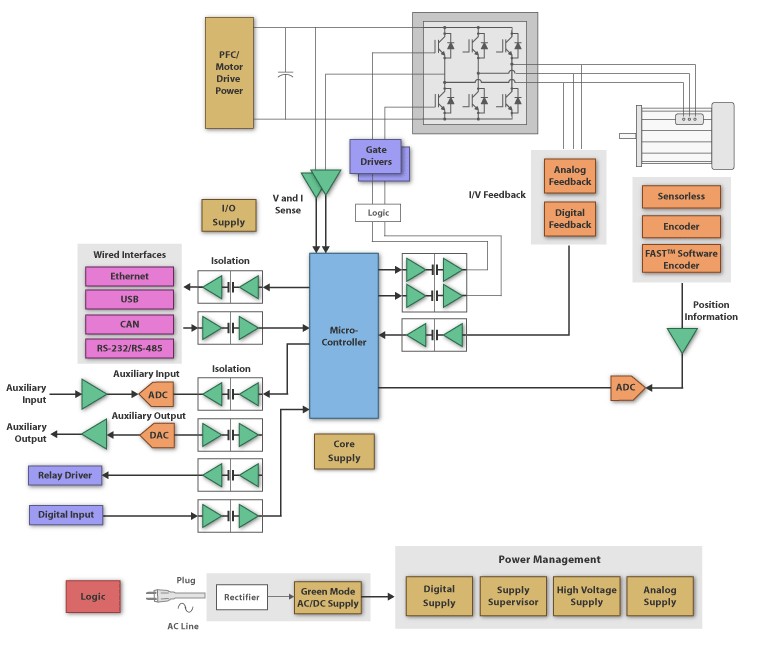Design considerations Permanent Magnetic Synchronous Motor (PMSM) Overview Permanent magnetic synchronous motors (PMSM) are very similar to AC induction motors or brushless DC motors (BLDC). They all have a permanent magnetic rotor and a wound stator. PMSM motors are typically controlled using sinusoidal waveforms, while BLDC motors are typically controlled using a trapezoidal signal, also known as a six-step commutation. PMSM's sinusoidal control is very efficient, and the motor operates smoothly, minimizing vibration and reducing noise. The use of Field Oriented Control (FOC) technology for PMSM motors also minimizes system generated torque ripple and electromagnetic interference. PMSM motors offer higher power densities when compared to AC induction motors (ACIM). microprocessor TI's C2000TM family of MCUs can control PMSM motors by using scalar or vector control techniques. Knowing the rotor position is very important for efficient control of PMSM motors. The position of the rotor can be detected by a Hall sensor or a rotary encoder connected to the motor. These sensor inputs are used in feedback control systems with sensors. The rotor position can also be estimated by using back EMF voltage information. This feedback control mode eliminates the need for sensors and additional wiring. A position or speed estimator can also be used to calculate the rotor position. The integrated high-speed 12-bit ADC converter, high-resolution pulse width modulator (PWM), and quadrature encoder input (QEI) on the C2000MCU make it suitable for PMSM motor control. The C2000MCU core is capable of executing complex mathematical functions in a short period of time, making this MCU family an ideal choice for implementing vector control techniques and controlling multiple motors simultaneously. This family of PWMs has a programmable dead-band delay that drives the high-side and low-side gate drivers. The Stellaris® family of MCUs provides ARM-based solutions to customers who prefer an open architecture core. These MCUs also provide integrated ADC, motor-specific PWM and QEI inputs for sensor control. Its hardware-based fault detection system shuts down the system faster, without software intervention. These MCUs can also be used to implement scalar and vector control techniques. isolation TI digital isolators feature logic input and output buffers that are isolated by TI's silicon dioxide (SiO2) isolation barrier to provide 4kV isolation. When used with isolated power supplies, these devices block high voltages, isolate ground, and prevent noise currents from entering the local ground and interfering with or damaging sensitive circuitry. Interface/connection Traditional analog RS-232/RS-485 interfaces have always been a common choice for motor control applications. Looking ahead, designers will integrate mainstream interfaces such as Ethernet, USB and CAN into their products. TI is committed to providing solutions for both traditional and emerging industrial interfaces. For example, TI recently introduced the world's first isolated CAN transceiver ISO1050. Power management Texas Instruments offers power management IC solutions ranging from standard ICs to high performance plug-ins, transformers, digital power MOSFETs and integrated power modules. From AC/DC and DC/DC power supplies, linear regulators and non-isolated switching DC/DC regulators to PMIC and power and display solutions, Texas Instruments' power management IC solutions can help you with Project Development. 2.00MM VDSL Cable Connector.SCSI Connector Series. 2.00MM VDSL Cable Connector ShenZhen Antenk Electronics Co,Ltd , https://www.atkconnectors.com